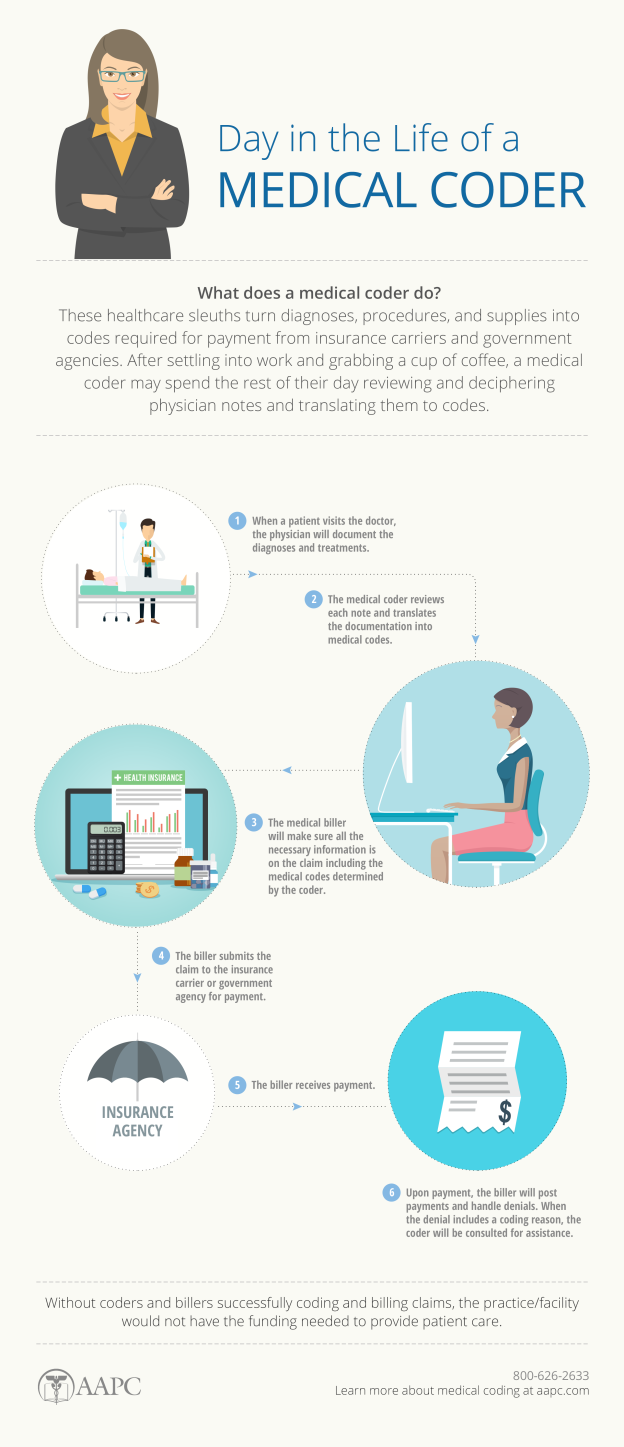In the world of healthcare, accurate and efficient medical coding plays a crucial role in ensuring proper reimbursement and maintaining comprehensive patient records. However, explaining the intricacies of medical coding to someone unfamiliar with the field can be quite challenging. This article aims to provide a concise yet comprehensive overview of how to effectively explain medical coding, breaking down complex terminology and highlighting its importance in the healthcare industry. Whether you are a healthcare professional looking to educate patients or a student seeking to understand this vital aspect of healthcare administration, this article will equip you with the necessary knowledge to explain medical coding with clarity and confidence.
Understanding Medical Coding
Medical coding is a critical component of the healthcare system, providing a standardized way to document, classify, and track diagnoses, procedures, and treatments. It involves translating medical information into alphanumeric codes, which allows for streamlined communication between healthcare providers, insurance companies, and other stakeholders. Through medical coding, important data about patient care and healthcare utilization can be recorded, analyzed, and used for various purposes such as billing, research, and quality improvement.
What is Medical Coding?
Medical coding is the process of assigning alphanumeric codes to medical diagnoses, procedures, and treatments. These codes, obtained from various coding systems, serve as a universal language in the healthcare industry. They provide a structured and standardized way to document and communicate patient-related information, ensuring accuracy, clarity, and consistency.
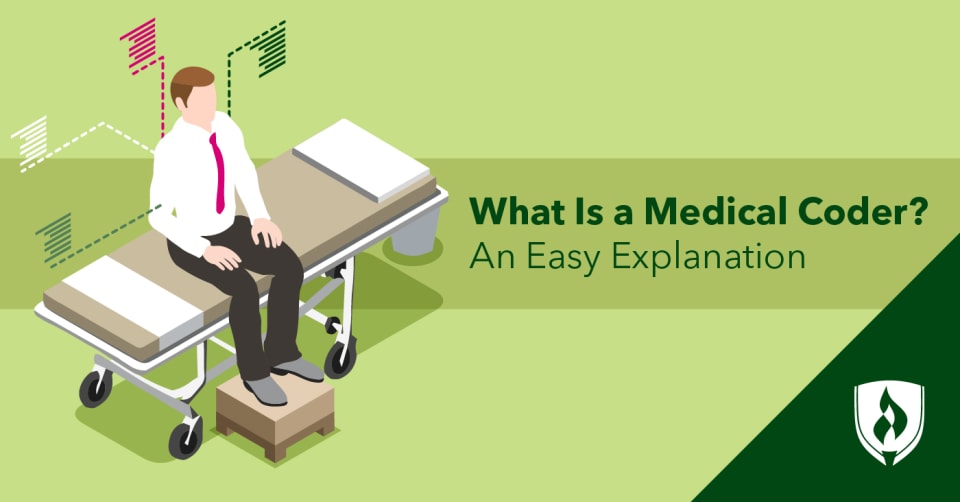
This image is property of www.rasmussen.edu.
Importance of Medical Coding
Accurate medical coding is essential for several reasons. First and foremost, it facilitates proper reimbursement for healthcare services rendered. Insurance companies rely on these codes to determine the coverage and payment for medical procedures and treatments. Incorrect or incomplete coding can result in delayed or denied reimbursements, leading to financial strain for healthcare providers.
Furthermore, medical coding plays a vital role in healthcare analytics and research. Robust and accurate coding enables the collection and analysis of data that can be used to monitor public health trends, identify risk factors, and evaluate the effectiveness of medical interventions. It also aids in the identification and tracking of healthcare disparities, facilitating targeted interventions and policy changes to improve healthcare outcomes.
Medical Coding Systems
Several coding systems are used in medical coding, each serving specific purposes. The three primary coding systems are ICD-10-CM, CPT, and HCPCS Level II.
ICD-10-CM
ICD-10-CM, which stands for International Classification of Diseases, 10th Revision, Clinical Modification, is a globally recognized coding system for classifying diagnoses. It provides a standardized language for accurate and detailed recording of various diseases, conditions, and injuries. The codes in ICD-10-CM are alphanumeric and can be up to seven characters long.
CPT
CPT, or Current Procedural Terminology, is a coding system developed by the American Medical Association (AMA). It is primarily used for documenting and billing medical procedures and services. CPT codes are five digits long and cover a wide range of medical services, including surgeries, consultations, laboratory tests, and radiology procedures.
HCPCS Level II
HCPCS Level II, or Healthcare Common Procedure Coding System Level II, is a coding system that provides additional codes for services and supplies not covered by CPT codes. It includes alphanumeric codes and is commonly used for items such as durable medical equipment, medications, and ambulance services.
ICD-10-CM
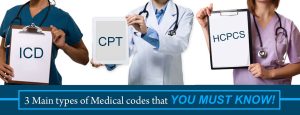
What is ICD-10-CM?
ICD-10-CM is a standardized coding system used to classify and document diagnoses in healthcare settings. It provides a comprehensive set of codes that capture a wide range of diseases, conditions, and injuries. These codes facilitate accurate and consistent documentation, ensuring that critical information is easily accessible and understandable by healthcare professionals, researchers, and insurance companies.
Purpose of ICD-10-CM
The primary purpose of ICD-10-CM is to support clinical decision-making, quality improvement, and appropriate reimbursement for healthcare services. It allows for accurate tracking and analysis of diseases and conditions, enabling healthcare providers to identify trends and implement targeted interventions. Furthermore, ICD-10-CM codes serve as a critical component in the billing process, enabling healthcare providers to receive timely and accurate reimbursement for their services.
Code Structure in ICD-10-CM
ICD-10-CM codes are alphanumeric and follow a specific structure. They consist of three to seven characters, with each character representing different levels of specificity. The first character is always an alphabetic letter, followed by a combination of numbers and letters. The more characters a code has, the more specific and detailed the diagnosis.
CPT
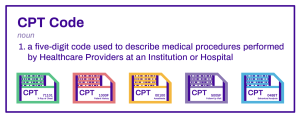
What is CPT?
CPT, or Current Procedural Terminology, is a coding system used to document and bill medical procedures and services. Developed by the American Medical Association (AMA), CPT codes provide a standardized way to describe medical procedures, surgeries, consultations, and other healthcare services. These codes play a crucial role in accurate billing, reimbursement, and utilization tracking.
Role of CPT in Medical Coding
CPT codes serve multiple purposes in medical coding. They accurately describe the procedures and services performed by healthcare providers, allowing for effective communication among healthcare professionals, insurance companies, and other stakeholders. Furthermore, CPT codes facilitate appropriate reimbursement by insurance companies, ensuring that healthcare providers are compensated fairly for the services they provide.
Code Structure in CPT
CPT codes are five digits long and follow a specific structure. The first digit represents the main category or section of the CPT manual. The subsequent digits further refine the procedure, providing additional details and specificity. Additionally, CPT codes may include modifiers, which are two-digit codes that indicate specific circumstances or variations of a procedure.
HCPCS Level II

What is HCPCS Level II?
HCPCS Level II, or Healthcare Common Procedure Coding System Level II, is a coding system that complements CPT codes by providing additional codes for services and supplies not covered in the CPT coding system. HCPCS Level II includes alphanumeric codes and covers a broad range of items, including durable medical equipment, medications, orthotics, and prosthetics.
How HCPCS Level II Supplements CPT
HCPCS Level II codes supplement CPT codes by providing a comprehensive coding system for items and services not typically covered under CPT. This includes items such as medical supplies, ambulance services, and certain medications. By incorporating HCPCS Level II codes, medical coders can accurately capture and document these additional services, ensuring accurate reimbursement and utilization tracking.
Code Structure in HCPCS Level II
HCPCS Level II codes consist of alphanumeric characters and are structured differently from CPT codes. They typically begin with a letter (A to V) followed by four numeric digits. Similar to CPT, HCPCS Level II codes may also include modifiers to provide additional details or circumstances related to the procedure or service.
Documentation and Medical Coding

Importance of Accurate Documentation
Accurate documentation is crucial for effective medical coding. It provides the necessary information for medical coders to assign the appropriate codes that reflect the diagnoses, procedures, and services provided. Proper documentation ensures proper reimbursement, supports quality improvement efforts, and helps healthcare professionals make informed decisions about patient care.
Key Elements in Medical Documentation
Medical documentation should include essential elements to support accurate coding and billing. This includes the patient’s demographic information, medical history, chief complaint, assessment, diagnosis, procedures performed, and any additional relevant information. The documentation should be comprehensive, clear, and concise, ensuring that the codes assigned accurately represent the services provided and the patient’s condition.
Evaluation and Management (E/M) Codes
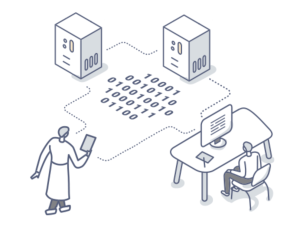
What are E/M Codes?
Evaluation and Management (E/M) codes are a subset of CPT codes that describe the services provided during the evaluation and management of a patient. These codes are used to document and bill for office visits, hospital rounds, consultations, and other encounters between healthcare providers and patients. E/M codes require the consideration of various factors, such as the complexity of the patient’s condition, the level of service provided, and the healthcare provider’s documentation.
Components of E/M Codes
E/M codes consist of several components that help determine the appropriate code level. These components include the history of present illness, review of systems, physical examination, medical decision-making, and time spent with the patient. Proper documentation of these components is crucial to ensure accurate code selection and appropriate reimbursement.
Modifiers in Medical Coding

Definition of Modifiers
Modifiers are two-digit codes used in medical coding to provide additional information to further describe a procedure or service. They are used to indicate specific circumstances or variations that affect the way a service is performed or billed. Modifiers are important for accurate coding and billing, as they help to clarify any unique aspects of a procedure or service.
Commonly Used Modifiers in Medical Coding
There are numerous modifiers used in medical coding, each serving a specific purpose. Some commonly used modifiers include:
- Modifier 25: Used to indicate that a significant, separately identifiable evaluation and management service was provided on the same day as a procedure or another service.
- Modifier 59: Used to indicate that a service or procedure was distinct or independent from other services performed on the same day.
- Modifier 51: Used to indicate that multiple procedures were performed during the same session or on the same day.
Proper use of modifiers ensures accurate coding, appropriate reimbursement, and transparency in billing practices.
Reimbursement and Medical Coding

How Coding Affects Reimbursement
Accurate and appropriate medical coding directly impacts reimbursement for healthcare services. Insurance companies rely on medical codes to determine coverage and payment for procedures and services. Incorrect or incomplete coding can lead to delayed or denied reimbursements, financial losses for healthcare providers, and potential billing audits.
By assigning the correct codes, healthcare providers can maximize their reimbursement by ensuring that the services rendered are accurately documented and billed. This requires adherence to coding guidelines and accurate documentation to support the codes assigned.
Coding for Maximum Reimbursement
Coding for maximum reimbursement requires a comprehensive understanding of coding guidelines, documentation requirements, and payer-specific rules. Healthcare providers should ensure that their documentation includes all relevant details and accurately reflects the services provided.
Proactive measures, such as regular training for healthcare professionals and coding staff, can help mitigate coding errors and ensure compliance with coding guidelines. Collaborating with professional coding organizations and staying updated on coding changes and best practices can also contribute to achieving maximum reimbursement.
Coding Compliance and Accuracy
From ongoing education to internal audits and collaboration with professional coding organizations, these strategies serve as a compass in the complex landscape of medical coding, ensuring ethical practices and the delivery of high-quality patient care.
Importance of Coding Compliance
Coding compliance is crucial for accurate and ethical medical coding. Healthcare providers are legally and ethically obligated to accurately document and code patient information. Compliance with coding guidelines protects patients, supports appropriate reimbursement, and maintains the integrity of the healthcare industry.
Failure to comply with coding regulations and guidelines can lead to severe consequences, such as legal penalties, loss of reputation, and financial losses. Compliance programs and regular audits are essential to monitor coding accuracy and ensure adherence to regulations.
Strategies to Ensure Accurate Coding
Several strategies can help healthcare providers ensure accurate and compliant coding practices:
- Ongoing training and education: Regular training and education for healthcare professionals and coding staff ensure that they stay updated on coding guidelines, best practices, and regulatory changes.
- Regular internal audits: Conducting regular internal audits can help identify coding errors or inconsistencies, allowing for timely correction and compliance.
- Collaboration with professional coding organizations: Engaging with professional coding organizations provides access to resources, networking opportunities, and expert guidance to ensure coding accuracy and compliance.
- Implementing coding compliance programs: Establishing comprehensive coding compliance programs helps educate staff, establish coding protocols, and promote a culture of compliance within healthcare organizations.
By adopting these strategies and emphasizing coding accuracy and compliance, healthcare providers can minimize coding errors, protect patient data, and maintain a strong ethical foundation in medical coding practices.
In conclusion, medical coding plays a crucial role in the healthcare industry by providing a standardized and efficient way to document, classify, and track diagnoses, procedures, and treatments. Understanding the various coding systems, such as ICD-10-CM, CPT, and HCPCS Level II, along with proper documentation, accurate code selection, and compliance with coding guidelines are essential for successful and ethical medical coding practices. By prioritizing accurate coding, healthcare providers can ensure proper reimbursement, support quality improvement efforts, and contribute to the delivery of high-quality patient care.
